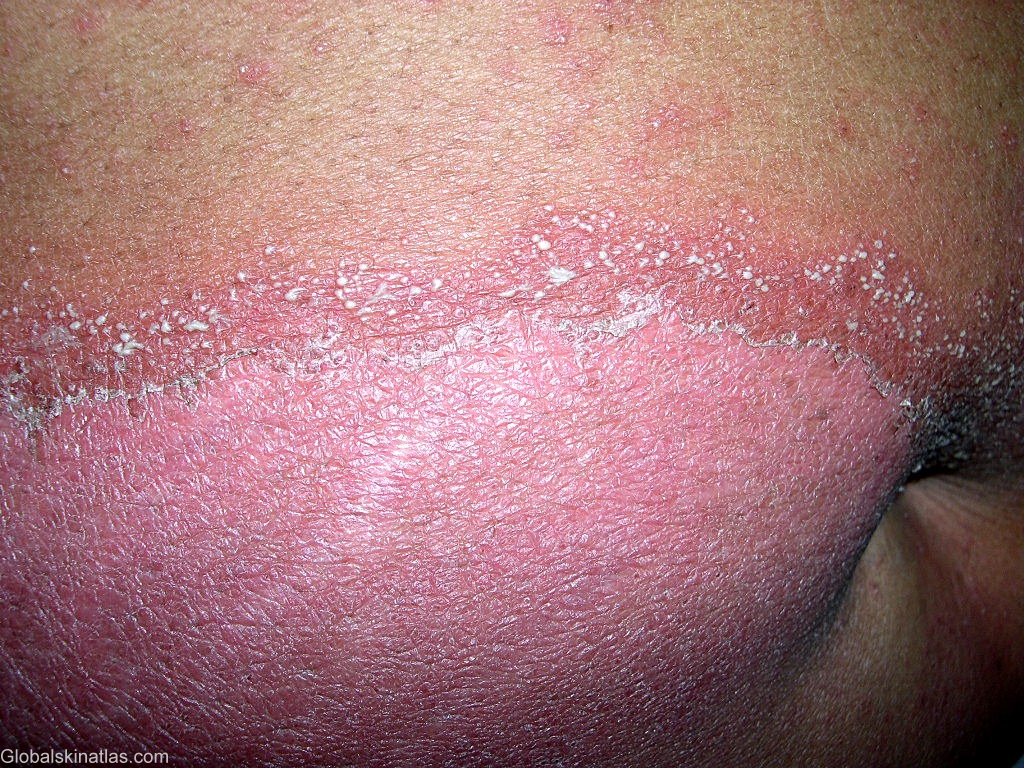

Diagnosis: Subcorneal pustular dermatosis
Description: Grouped pustules forming annular pattern
Morphology: Pustules
Site: Abdomen
Sex: F
Age: 60
Type: Clinical
Submitted By: Shahbaz Janjua
Differential DiagnosisHistory:
Subcorneal pustualar dermatosis also known as Sneddon Wilkinson disease, was first described by Sneddon and Wikinson in 1956. It is rare, benign, chronic relapsing pustular eruption of unknown etiology. The condition which characteristically affects flexural aspects of trunk, has more commonly been reported in middle-aged and elderly women. A background history of paraproteinemia, multiple myeloma, pyoderma gangrenosum, inflammatory bowel disease, or rheumatoid arthritis may be present.
The primary lesions arise within a few hours as flaccid pustules on normal or very mildly erythematous skin. The pustules can be either isolated or grouped, and they tend to coalesce, forming annular, circinate, or serpiginous patterns. The eruption resolves, leaving mild hyperpigmentation, over which further waves of pustulation may arise. The condition is differentiated from acute generalized exanthematous pustulosis and pustular psoraisis by the absence of fever and systemic toxicity.
Most of the cases of subcorneal pustular dermatosis respond to dapsone and topical steroids.

